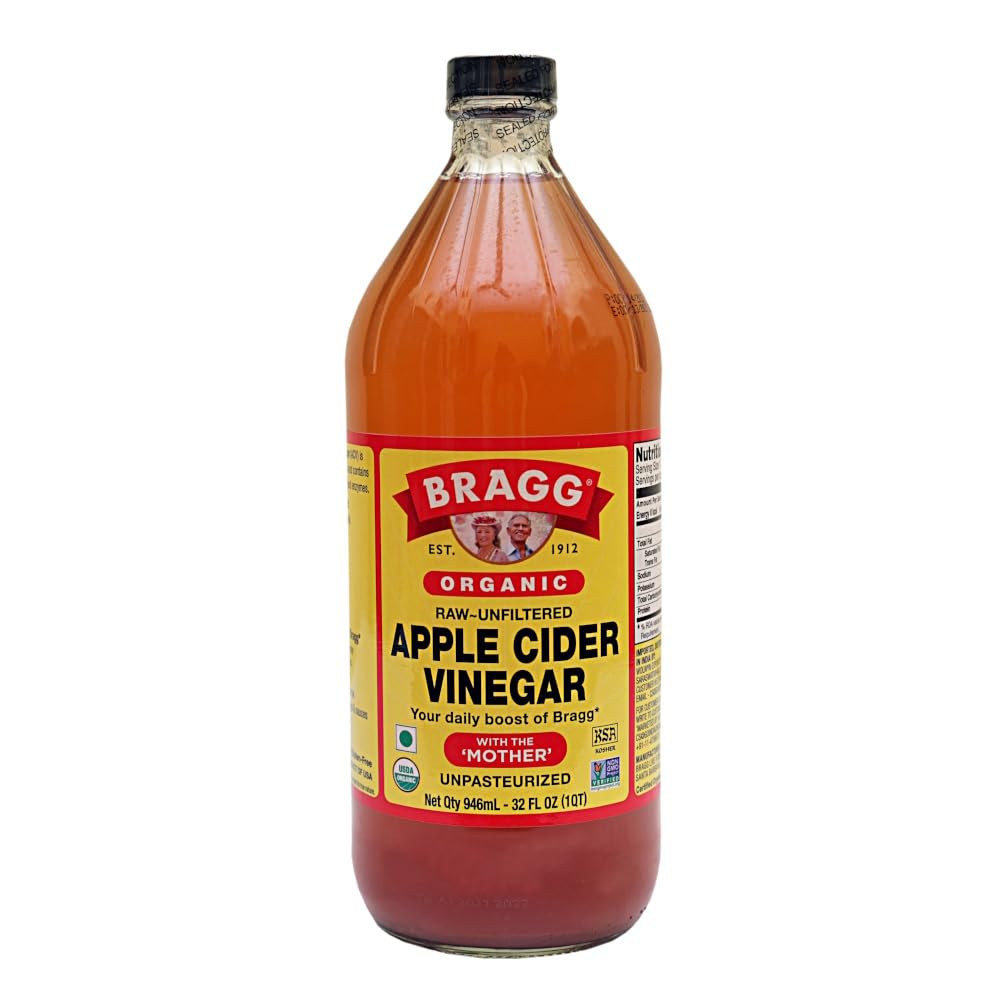Apple Cider Vinegar for Fingernail Fungus: A Simple Home Remedy That Works
Apple cider vinegar has gained popularity as a natural remedy for many health issues, including fingernail fungus. This simple kitchen ingredient can help improve your nail health by creating an environment that’s less friendly to harmful fungi. If you’re struggling with unsightly nails and seeking a solution, you might be surprised at what apple cider vinegar can do for you.

Using apple cider vinegar is easy and can be a part of your daily routine. By applying it properly or even drinking a diluted mixture, you can tap into its antifungal properties. This post will go into detail on how it works, how to use it effectively, and additional tips for maintaining nail health to prevent future infections.
Make sure to stick around for helpful tips and a better understanding of how to tackle fingernail fungus naturally. You’ll find that by using apple cider vinegar and some common remedies, you can reclaim your healthy nails in no time.
Key Takeaways
- Apple cider vinegar is effective against fingernail fungus.
- Proper application methods can enhance its antifungal effects.
- Consistent care and prevention are key to nail health.
Understanding Fingernail Fungus
Fingernail fungus is a common issue that can be bothersome and hard to treat. This section covers what causes it, how to identify it, and what sets it apart from other infections.
Causes and Symptoms
Nail fungus, also known as onychomycosis, is mainly caused by fungi that thrive in warm, moist places. You might catch it from walking barefoot in communal areas or sharing nail tools. It can also result from other conditions, like diabetes or weakened immune systems.
Symptoms can vary, but you’ll likely notice:
- Discoloration: Yellow or brown spots under your nails.
- Thickening: As the infection worsens, your nails may become thick and crumbly.
- Separation: In some cases, the nail can pull away from the nail bed.
If you see any of these signs, it could be time to take action for your nails.
Comparing Fungal Infections
Nail fungus is just one type of fungal infection. While it mainly affects the nails, other infections can appear on the skin or scalp. Common fungal infections include athlete’s foot and ringworm.
What sets nail fungus apart is its location. The fungi get into the nail bed, which can make it tricky to get rid of.
Here’s a quick comparison:
| Infection Type | Affected Area | Symptoms |
|---|---|---|
| Nail Fungus | Nail bed | Discoloration, thickening |
| Athlete’s Foot | Feet | Itching, red, flaky skin |
| Ringworm | Skin or scalp | Red, circular rash |
Knowing these differences can help you address your specific condition more effectively.
Why Apple Cider Vinegar Works
Apple cider vinegar (ACV) is known for its ability to target nail fungus effectively. Its unique properties create an environment that is less favorable for fungal growth. Let’s look at how this works in detail.
The Science of ACV
Apple cider vinegar is made through a fermentation process. It starts with crushed apples, where yeast converts the sugars into alcohol. Then, bacteria turn that alcohol into acetic acid.
Acetic acid is key to ACV’s effectiveness against fungus. It lowers the pH level of the skin, making it more acidic. Fungus prefers a more alkaline environment. By increasing acidity, ACV makes it harder for fungi to thrive.
ACV also contains “the mother,” which is a cloudy substance made up of beneficial bacteria and enzymes. This can enhance its antifungal and antibacterial properties, making it even more effective against infections.
Acetic Acid and Its Properties
Acetic acid is the main ingredient in apple cider vinegar responsible for its strong effects. This powerhouse compound exhibits antifungal properties, which means it can help kill or inhibit the growth of fungi.
In addition to its antifungal action, acetic acid has antibacterial properties as well. This helps protect your nails from bacteria that could worsen the infection.
When you apply diluted ACV to your nails, the acetic acid seeps into the nail bed. This direct application can target the fungal infection at its source. Regular use can bring noticeable changes, reducing pain, itching, and overall discomfort associated with nail fungus.
How to Use Apple Cider Vinegar

Using apple cider vinegar can be an effective treatment for fingernail fungus. There are a few different methods you can try, such as direct application, soaking rituals, and making blends. Each method has its own benefits to help you tackle that stubborn fungus.
Direct Application Technique
For a quick approach, you can apply diluted apple cider vinegar directly to the affected nail. Mix equal parts of vinegar and water to create your solution. You can use a cotton swab to apply it to the fungus directly.
Leave it on for about 30 minutes. This method targets the fungus directly without needing too much time. For best results, repeat this process daily. Inflammation and discomfort might reduce as you continue this treatment.
Soaking Rituals
Soaking your nails in a vinegar solution can be very effective. To do this, mix one part apple cider vinegar with one part warm water in a bowl.
Soak your fingers for about 20-30 minutes. This method allows the vinegar to penetrate the nail bed better. The warmth also helps open your pores, improving the treatment’s effectiveness.
You can do this soak several times a week. Remember to dry your nails thoroughly afterward since moisture can worsen the fungus problem.
Creating Blends for Increased Efficacy
Combine apple cider vinegar with other natural ingredients to boost its antifungal properties. A popular blend is mixing vinegar with tea tree oil.
Add a few drops of tea tree oil to your vinegar solution before applying it or soaking. This mix can enhance the treatment’s effectiveness since tea tree oil is known for its antifungal benefits.
Another option is adding baking soda, which can help balance pH levels and create an environment less hospitable to fungus. Whichever blend you choose, ensure consistency for the best results.
Additional Remedies and Ingredients
There are several remedies and ingredients that can help you tackle fingernail fungus along with apple cider vinegar. Each has its unique properties that may enhance your treatment.
Tea Tree Oil and Its Uses
Tea tree oil is a strong antifungal agent. It can help reduce the growth of fungus on your nails. To use it, mix a few drops of tea tree oil with a carrier oil like coconut oil. Apply this mixture directly to the affected area. You can do this twice daily.
Not only does tea tree oil help with fungus, but it also has antibacterial properties. This means it can help keep your nails healthy by preventing potential infections. Some people even report faster healing times when combining it with other treatments.
Baking Soda and Epsom Salt
Baking soda is great for absorbing moisture, which is crucial when dealing with nail fungus. To use it, mix equal parts baking soda and water to form a paste. Apply this to your nails and let it sit for about 10 minutes before rinsing.
Epsom salt can be beneficial as well. It can help reduce inflammation and soften the skin around your nails. Add half a cup of Epsom salt to warm water and soak your fingers for about 15-20 minutes. This combination can provide relief and support the healing process.
The Role of Essential Oils
Essential oils like lavender oil and orange oil can also play a role in your treatment. Lavender oil is known for its calming effects but also has antifungal properties. You can dab a drop or two onto the affected nails.
Orange oil contains compounds that can help eliminate fungal growth. Mix a few drops of orange oil with a carrier oil and apply it to your nails. These oils not only aid in fighting fungus but also leave a nice scent.
Feel free to explore other options like lemon juice or manuka honey to support your treatment. Each of these ingredients can offer additional benefits in your fight against fingernail fungus.
Prevention and Aftercare
Taking care of your nails is key to preventing fungal infections. By making some lifestyle adjustments and focusing on maintaining nail health, you can significantly reduce your chances of developing nail fungus.
Lifestyle Adjustments
To prevent fungal infections, start by keeping your feet and hands dry. Fungi thrive in moist environments, so it’s important to dry them thoroughly after washing.
Wear breathable footwear to allow air circulation. Opt for cotton socks that wick moisture away from your skin. If you’re prone to sweating, consider changing your socks throughout the day.
Limit your time in communal areas, like public pools and locker rooms. If you do go, wearing waterproof sandals can protect your feet.
Always keep your nails trimmed and avoid biting them. This helps prevent irritation to the nail bed where fungus can take hold. If you’re doing chores, use gloves to protect your hands from harmful substances.
Maintaining Nail Health
Maintaining nail health includes using natural ingredients like apple cider vinegar or tea tree oil as part of your routine. These have mild antifungal properties and can be an excellent way to curb fungus naturally.
Make it a habit to regularly inspect your nails for any signs of irritation or changes in color. This helps you catch any potential issues before they escalate.
Also, be careful with nail products. Many have harmful chemicals that can irritate the skin and nail bed. Choose gentle, non-toxic options whenever possible.
Finally, keep your tools clean. Wipe down nail clippers and files with rubbing alcohol to prevent any transfer of fungus or bacteria. Keeping your nails and surrounding skin healthy will help you stay fungus-free.
Frequently Asked Questions
You may have some questions about using apple cider vinegar for fingernail fungus. Let’s dive into some common concerns and specific details to help you out.
How long does it usually take to see results from using apple cider vinegar on nail fungus?
Results can vary, but many people start to notice improvements in a few weeks. Consistent daily use is key for the best chances of success. Just remember, full recovery might take several months depending on the severity of the fungus.
Is there a difference in effectiveness between white vinegar and apple cider vinegar for toenail fungus?
Both types of vinegar can be effective, but apple cider vinegar is often preferred due to its natural antifungal properties. Some users find that ACV works better for them, while others may not see much difference. It’s worth trying both to see which one suits you best.
Can I apply apple cider vinegar directly to my toenail if I have fungus?
Yes, you can apply apple cider vinegar directly. It’s safe to use in its diluted form. Just mix it with water to prevent irritation, and then soak or apply it to the affected nails.
What’s the quickest remedy to get rid of toenail fungus?
While vinegar can help, the quickest remedy may depend on the individual. Some people find that over-the-counter antifungal treatments or prescribed medications can work faster. Always consult a healthcare provider for personalized advice.
How should I apply apple cider vinegar to my toenail fungus using a cotton ball?
To apply, soak a cotton ball in a mixture of equal parts apple cider vinegar and water. Place it onto your fungus-infected nail and secure it with a bandage. Leave it on for about 30 minutes for best results.
What are some proven home treatments for nail fungus?
In addition to apple cider vinegar, some other home treatments include tea tree oil, garlic, and baking soda. Each may have antifungal properties, but individual results can vary. Try them out and see what works for you.
